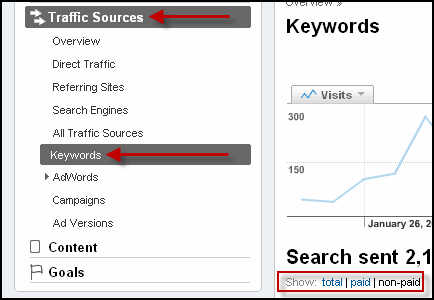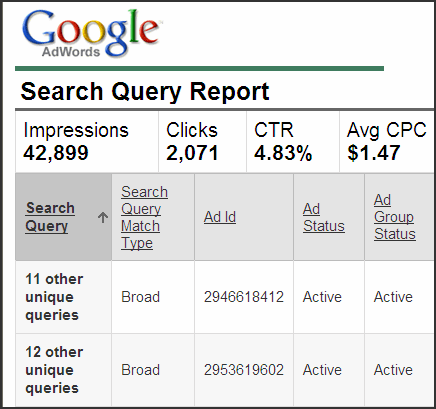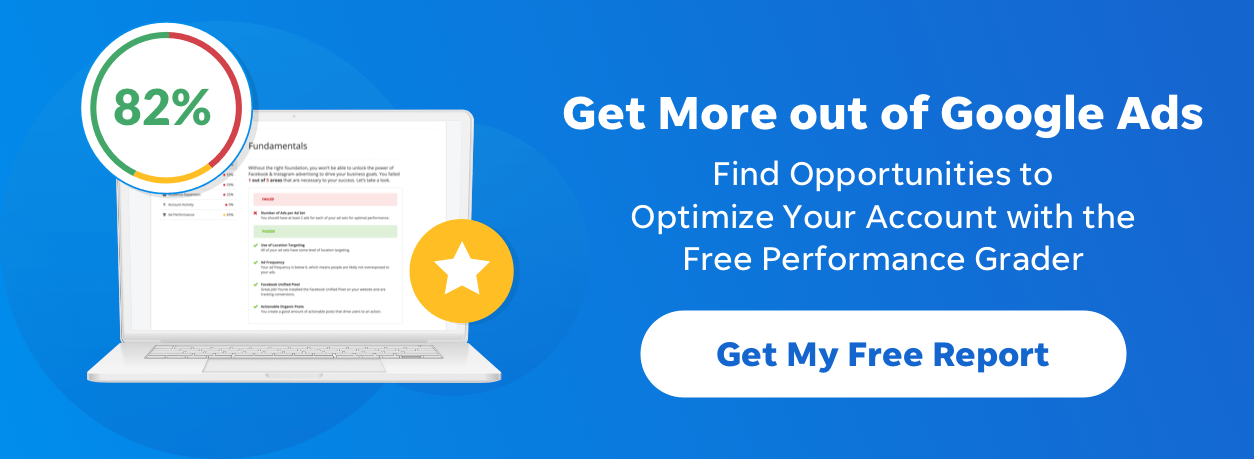
The Value of Keyword Expansion (And How to Do It Well)
The following was previously a series of blog posts. We’re repurposing the series in a single document here to make the piece easier to link at and reference; additionally our readership is much larger than it was when we first started the blog, and we thought the new readers might find the content valuable.
The Value of Keyword Expansion & Discovery
Continual keyword discovery and keyword expansion in paid search marketing is immensely important. There are actually a number of instances where strategically expanding your keyword portfolio offers more ROI than bid manipulation.
The concept of “diminishing returns” and modern portfolio theory is applicable to more than just economics. In a keyword portfolio, not unlike in a stock portfolio, there is a point in the optimization of a vertical when the work you put in and/or increased bidding will cease to yield the same (and often any) sort of return.
This principle can be effectively applied to pay-per-click marketing (Efficient Frontier has an excellent white paper on this concept as it regards paid search bidding here).
Basically, the premise here is that there is a certain amount of “low-hanging fruit” surrounding a given keyword and associated keywords. My site dedicated to providing people with investment information might be seeing a lot of success from bidding on the keyword “portfolio investment strategy”.
That’s great, but anyone who’s managed a PPC campaign knows that I’m likely to run into diminishing PPC returns. Let’s take a dramatically oversimplified example (complete with made up numbers!) to illustrate this point:
If I start by bidding a dollar for the “portfolio investment strategy” keyword, it might convert at 5 dollars a conversion. Conversions are actually worth 10 dollars to me, so this is great, but I might only get 20 conversions a month. When I bid 10 dollars, meanwhile, it might cost me 12 dollars a conversion, but now I’m getting 100 conversions a month (by bidding more my ad is able to be impressed upon more searchers, generate more clicks, and often result in more conversions overall; but there is more competition). The problem here is that as I increase conversions, my margin is shrinking (and in this case, disappearing altogether):
We can also see this principle represented in the following graphic:
The value of continual keyword discovery is that instead of investing time and resources (via bid management tools or by attempting to assign monetary value to content and promotional activities) in trying to find your “efficient frontier,” you get to create a brand new graph.
This new graph is complete with a fresh crop of low-hanging fruit. Rather than spending more money for the 100 conversions, you spend less money for two sets of fifty or five sets of twenty.
But the real question is: how do you effectively create this “second graph.”
Expanding Your Keyword List
In the last installment of our keyword discovery and expansion how to, we talked about the value of “discovering new graphs” and explained that, in many cases, it’s better to expand your keyword portfolio to new keyword verticals:
The premise here is that ideally, instead of moving “up the ladder” and paying more money for every new conversion (forcing us to choose between volume and controlled costs), we would simply start another graph and find a means of generating more conversions for the same average cost.
To do this we need to unearth new, relevant keyword verticals. There are a few means of doing that:
- Leverage organic search data
- Create a keyword discovery infrastructure within your AdWords account
- Discover tangential keyword verticals
Let’s take a look at how each of these might work.
Leverage Organic Keyword Data to Expand Your Keyword List
A great way to find new paid search keyword candidates is to take a look at your website’s log files. What keywords are driving visitors to your site organically? If you’re using any kind of marketing analytics package, you can easily view this information:
You’ll then be shown the organic traffic that’s reached your site, along with associated keyword visits. WordStream’s tool also records this information, and the keyword data is presented along with associated metrics:
You can see here not only the keywords that have driven traffic to your site, but also what people did once they got there (you get to take a look at conversion metrics, in this case how many people signed up for our premium investing information product).
We could now build out and focus our attentions to any of these new keyword verticals. We begin this process armed with a relatively precise knowledge of how much volume they’re likely to drive, and of whether or not they’ll convert for our site.
Create a Keyword Discovery Infrastructure within your PPC Campaigns
You can also develop methods of discovering keywords cheaply within your paid search campaigns. There are a number of ways to build this capability in to your PPC efforts, but the principle is the same: namely, you should be mining your account history and your site’s analytics and/or log files to discover new potential keyword opportunities.
Once you’ve implemented a few discovery mechanisms within your paid search account, you can track paid traffic by running a report from within AdWords called a search query report:
You can see the issue here as it regards discovery right away: a lot of our more specific queries are getting rolled up as “other unique queries” denying us visibility into the keywords people are using to reach our site (the very thing we’re after here).
As a result it’s better to rely on analytic tools which provide more visibility into the queries people are using to reach your site.
Discover Tangential Keyword Verticals
There are a number of slick ways to find keywords you might not be able to identify through your log files. Here are a handful of useful tools:
Free Keyword Research Tools
- SEO Book Keyword Tool
- Google AdWords Keyword Suggestion Tool
- Google’s Search Based Keyword Tool
- The trial version of WordStream
Paid Keyword Research Tools
- Compete Search Analytics
- WordStream’s Keyword Discovery Tool
There’s also a great post on getting started with a keyword list (which can be applied to getting started in a “new keyword niche”) here.
Every Keyword Vertical has Low Hanging Fruit
The best thing you can do for your paid search campaigns and for your bottom line is to continually discover new keyword verticals. In addition to creating a system and processes to continually manage bids, you want to be sure to constantly mine your website’s data and to seek out new means of discovering keywords.
If you are investing time and resources in moving to the top of the graph, why wouldn’t you also be making a perpetual investment in keyword discovery?
The bottom line is: keyword discovery should be as dynamic and ongoing a process as bid manipulation, and in many cases, can provide you with even better returns.
Meet The Author
Tom Demers
Tom Demers is Co-Founder & Managing Partner at Measured SEM and Cornerstone Content.
See other posts by Tom Demers
More Articles Like This
Comments
Please read our Comment Policy before commenting.











